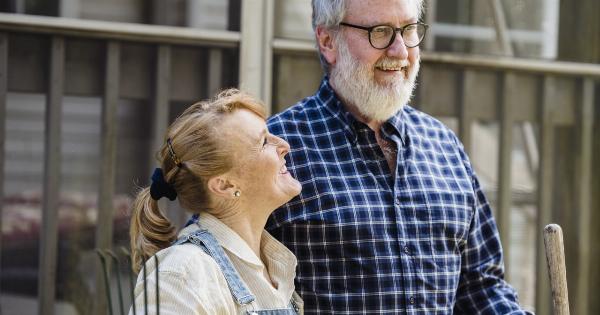It is a well-known fact that humans are sexually attracted to each other, and age is one of the critical factors that determine one’s sexual preferences. Age plays a crucial role in selecting partners, and both men and women have varying desires.
However, there is a significant and consistent difference between men and women regarding their age preferences. In this article, we will explore the age range that men and women typically desire in their erotic partners.
Age Preferences of Men
Men are generally considered to be attracted to younger women. According to research, men prefer women who are 10 to 15 years younger than their age. There are several reasons why men are drawn to younger women.
Younger women are perceived to be more attractive, energetic, and fertile. This preference is also evolutionary, as men are hardwired to seek out young, healthy, and fertile females for reproduction.
Studies have revealed that men’s desire for younger women is not only restricted to sexual desire. Men also tend to choose younger women as partners as it boosts their ego and masculinity. Younger females make men feel more youthful and virile.
Age Preferences of Women
Women’s preferences for age-difference in a partner are more complex than men. Women tend to prefer men who are older and more financially stable than them.
According to research, women generally prefer men who are five to seven years older than them. Women are typically attracted to men who can provide stability, security, and comfort in a relationship.
Younger men, on the other hand, are perceived to be immature and unstable in their career and, thus, do not fall in women’s age preferences.
As women age, their preferences change, and they tend to seek partners close to their age since the desire for financial stability and maturity remains critical. In essence, women prefer men who are similar or slightly older in age.
Factors That Affect Age Preferences
There are several factors that affect age preferences in both men and women. Some of the most critical factors include:.
1. Culture
Culture plays a critical role in age preferences. Different cultures have varying views of what is acceptable or not concerning age disparity. For instance, in some cultures, it is frowned upon when a woman marries a man who is much older than her.
2. Socio-economic status
Socio-economic status also influences age preferences. People tend to choose partners who are either in the same social class or above. In this regard, people tend to select partners who have similar lifestyles and are financially stable.
3. Sexual desire
Sexual desires also affect age preferences. Younger partners are perceived to be sexually active, which is a turn-on for both men and women. As a result, individuals with high sexual desires tend to prefer younger partners.
The impact of Age Difference in Relationships
Age differences in relationships can have both positive and negative effects. In a relationship, a significant age difference can create a power imbalance, with one partner having more life experience, more financial stability, etc.
On the other hand, it can also bring varying perspectives to the relationship and improve communication.
Furthermore, it can lead to societal criticism and stigma. Many people may view a couple in an age-disparate relationship as controversial or abnormal, which can lead to social isolation and felt stigma.
The Bottom Line
In conclusion, age preferences in erotic partners differ between men and women. Men typically prefer younger partners while women prefer older and more financially stable partners.
Culture, socio-economic status, and sexual desire are some of the factors that influence age preferences. While an age disparity in a relationship can bring unique perspectives and experiences, it can also cause a power imbalance and social isolation.






















